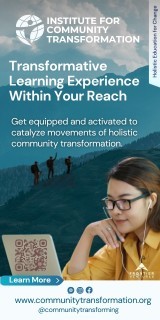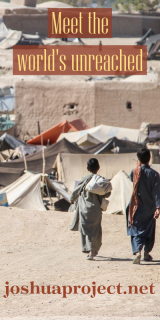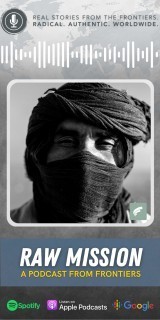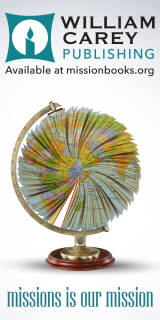The Escalating Filipino Force for the Nations

In the four brief years since its founding, the Asian Center for Missions has become the Philippines' largest agency sending workers outside the Philippine archipelago.
The Philippines have long been the target of North American missionaries. Today, they host over 3000 foreigners focused on the Master's missionary work. But a burgeoning number of Filipinos are no longer content to be relegated to position of host.
They have formed a new force for global mission from this nation of 68 million-with estimates of Evangelical Protestants in the Philippines spanning to eight percent (roughly five million). Additionally there are some five to eight million Catholics who have caught evangelical fervor through the charismatic El Shaddai movement.
Founded in 1994, the Asian Center for Missions has made formidable steps for missions mobilization, missions training--as well as sending. According to Bob Lopez, head of Operations and Deployment, the Asian Center is a much-needed step forward for mission in the Philippines. "We've been a mission field for 100 years," he says, "now it is time for us to get out of the crib. We're going out there and we're doing our part."
The Asian Center is a fast-moving and formidable step forward. It deserves mention that the Filipinos already send two missionaries for every three missionaries they host. But only one in 12 of these are sent beyond their own borders. In its efforts to reach the unreached within and beyond their borders, the Asian Center has quickly become the largest Filipino-based missions agency sending missionaries to Cambodia, China, Thailand, India, Indonesia and Japan.
In the short four years since its founding, the Asian Center has trained over 150 aspiring missionaries and sent 57 for long-term church plants. Additionally, they've mobilized well over 500 pastors and key leaders with a condensed version of the Perspectives on the World Christian Movement course. According Lopez, the course "has done wonders--all across the Philippine archipelago."
Origins
In the Spring of 1994 Gordon Robertson was an established lawyer in a prestigious Virginia law firm. Then he went on a short-term missions trip to India. After witnessing firsthand India's dire need for the Gospel, Robertson's affections--and the direction of his life--were radically changed.
The son of Pat Robertson (Christian Broadcasting Network host, author and former Presidential candidate), Gordon soon returned to the U.S. and quit his job, sold his house and cars and left for the Philippines, seeking to lay the groundwork for an organization that might raise up an army of laborers for the harvest.
Initially, he took a position as Asian Director for the Christian Broadcasting Network (CBN). Along with the President of the Asian Seminary for Christian Ministries, they gathered a number of Filipino pastors to talk about Asia's, and specifically the Philippines' great needs. They set a cornerstone for what would later become the Asian Center for Missions.
In these initial meetings, there was a unity of vision: to train up Filipinos as field missionaries to reach the rest of Asia. It made strategic sense, it was a fair reflection of scripture, and the Filipinos, they were convinced, were ready for the challenge. They agreed that a short, academic training course would be a the foundation as they began to target people who already had some theological training and ministry experience.
While just a few steps into the planning process, Robertson was convinced that he, and his Western partner Dr. Miguel Alvarez (from the Church of God, Cleveland) would have to decrease and the presence of the Filipino evangelical community must increase. It was only appropriate that an Asian Center must be owned by and representative of the broader Asian church. Robertson remains the president of the Asian Center, but according to Lopez, the Lord just spoke to Robertson and Alvarez and they said, "'you know, I think we've got to give this away. We can't keep it to ourselves, we're both foreigners here in the Philippines and this has got to be owned by the Philippines. The Filipino church has got to be part of this.'"
With this growing conviction of their foreignness, Robertson and Alvarez pushed for the establishment of a board of directors that represented the entire Filipino body. They invited leaders from key Filipino ministries, including the Secretary General of the Philippine Council of Evangelical Churches--an umbrella group to over 10,000 Filipino churches. Today, Lopez contends that the Asian Center is run by Asians for the sake of Asia. Certainly, the Asian Center has made deliberate efforts to hear from--and sit under--leadership from a broad sampling of the Filipino evangelicals.
One deliberate step they've taken to foster this sense of ownership is the effort to prevent the Asian Center from being dependant on North Amerian dollars. Though they do raise some funds in the states, Lopez estimates that the great majority--80 to 90 percent--of their income is raised through local effort in the Philippines. While creating this sense of ownership, it has also dramatically fueled their vision, a combination that Lopez believes is essential. He adds, "We really wanted to give the Filipinos a sense of destiny--a sense that we're going to have a part in global evangelization."
Mobilize, Train, Send
While they have been fruitful, and apparently effective, in sending missionaries, they found themselves almost forced into it. Initially, their primary purpose was to raise up educated, mature Christian workers, preparing them for immediate field service through another agency. Lopez explains, "Our focus has been to fast-track qualified, Filipino Christian workers" giving educated Christian workers the additional missiological training necessary to get them on the field. Their five-month program takes people from the point of earnest interest and ushers them through 600 hours of classroom training and one month of field exposure. The last three weeks of field training are spent in the country targeted for long-term service. The trainee thus has time to gain clarification (or confirmation) of calling and make some initial contacts with their targeted people.
As a number of students graduated from the program, the Asian Center faced two problems: too few indigenous agencies and churches that were ill-prepared to send a missionary team to the field. Lopez, a Filipino himself, recognizes that "the Filipino churches are not yet educated in missions, not like the American body of Christ." If these missionaries were going to get to the field, it was clear that the Asian Center must also offer the coverage of a sending agency. So they did. The 57 missionaries on the field have varying degrees of ongoing connection with the Asian Center. In a number of instances, the Asian Center has partnered with local congregations whose members formed teams while enrolled in the Asian Center's training period, making it almost natural to continue to serve under their veil.
But the foundation-stone of the Asian Center for Missions is the establishment of training centers throughout the Philippines and now sprouting up throughout the rest of Asia. To date, they have 12: Nine throughout the Philippines, and three overseas, including one in Varanasi, India and one in Jakarta, Indonesia. They have hopes of opening further training centers this year--one in Bangkok, one in Kuala Limpor, Malaysia and two others not specified to avoid potential security concerns.
Each of these training centers has a Coordinator and an advisory committee taken from churches and key ministries in the local area. This connection with the local Christan community has been a vital inroad for their mobilization efforts. The training is broke up into a number of one-week modules, each taught by one of the estimated 200 affiliated faculty members throughout South East Asia. These teachers are not typically paid staff, but regional Christian leaders--from seminaries, mission agencies and surrounding churches who dedicate consolidated portions of their time to further the cause.
Lopez approximates that 40-50 percent of those taking the program are senior pastors from Filipino churches. Many of these pastors are stirred to become active pastor-mobilizers. Many others have felt the call of God to leave the reins in the hands of their associates while they take up the call of missions full-time. One such example left the senior pastorate of a church of 5000. He now exercises his influence exclusively on missions mobilization, with special attention on reaching Muslims. A number of other former pastors are now field missionaries, finding the call of the unreached more pressing than their local church work. As Mission Frontiers is preparing to go to press, the evangelicals in these islands are gearing up for their Centennial Missions Congress--celebrating 100 years of Biblical Christianity in the Philippines. These recent moves toward distinctively Asian mission mobilization should make the event particularly sweet.
The leaders of the Asian Center believe that the Filipinos are a perfect fit to reach Asia. Appearance-wise they are not a shocking sight to their Asian neighbors--like the striking white Americans. Politically, they carry very little baggage, for they were not imperialistic. Lopez reminds us, "We have never conquered any countries. We have always been conquered. So we are not a threat. We can go into these countries and they say, 'these guys, they're going to be our servants.'"
Servants? Not a bad place to start







comments